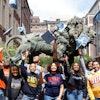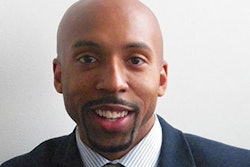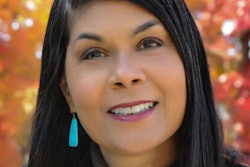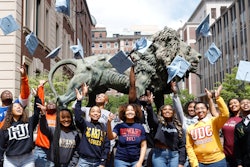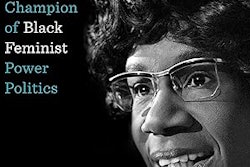For over 20 years, I have been an avid reader of the Giving USA Report on Philanthropic Giving, an annual report on fundraising in America produced by the Indiana University Lily Family School of Philanthropy. Each June, I eagerly await its release and subsequently use it to direct my fundraising strategy for the ensuing year.
In all of the recent fundraising trainings I provide, I posit that HBCUs are literally “leaving money on the table” due to the lack of attention paid to cultivating individual donors and, over the course of a two-hour orientation training, I demonstrated how. After reading this year’s report, my position remains unchanged, prompting me to offer a few tidbits of advice to college and university presidents and their advancement teams in preparation for fundraising for the 2023-2024 Academic Year.
According to the most recent report’s findings, philanthropic giving in the United States reached the half-trillion-dollar threshold in 2021 – the sunset year of the global health pandemic. This year reflects an all-time high in giving, and is consistent with previous years in the following categories: Religion – 27%; Human Services – 14%; Education – 13%; Gifts to grantmaking foundations – 11%; Health – 10%; Public Society Benefit – 9%; International Affairs – 6%; Arts, Culture and Humanities – 5%; Environment / Animals – 3%; Individuals – 2%.
When the same trends were juxtaposed with the recently released data, there was a slight decline in giving, but the pandemic years of 2020 and 2021 were two of the best giving years on record with $486.26 billion and $516.65 billion in charitable giving, respectively. In each of these years (2020, 2021 and 2022) the sources of giving remain consistent:
2020 | 2021 | 2022 | |
Individuals | 69% | 67% | 64% |
Foundations | 19% | 19% | 21% |
Bequests | 9% | 9% | 9% |
Corporations | 4% | 4% | 6% |
Total Giving by Year | $486.26B | $516.65B | $499.33B |
Each year when I have the opportunity to share these data in training, novice and sometimes veteran fundraisers are shocked at the results. Many of them have long believed that it is corporations and foundations funding philanthropic causes in America when, in reality, it is individuals. Since 1982, this trend has held as individual giving continues to hold not only the greatest source weight but also, indisputably, the greatest impact. Billionaire Robert Smith’s pledge to pay off $35 million in student loan debt for the Morehouse Graduating Class of 2019 was not only transformational and liberating for those directly impacted, but it would also go on to cause a catalytic movement that resulted in several individuals to follow his lead. Reed Hastings and Patty Quillin, Bill and Melinda Gates, McKenzie Scott, Warren Buffett, Oprah Winfrey, and Michael Jordan are just a few of the individuals who made significant investments. Surprisingly, according to research, one third of HBCUs recorded their largest gifts between July 2020 and December 2022, post Robert Smith’s gift, and surprisingly those gifts also came from individuals. And herein lies our greatest opportunity.
Through the lens of the individual donor, we must take note of a few other points that may be instructive for advancement professionals who seek to better understand and make connections with this category of contributors.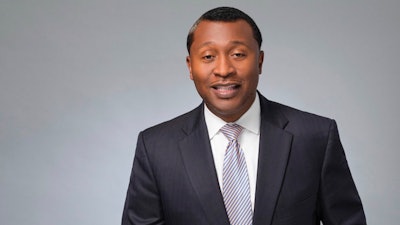 Dr. Roderick L. Smothers, Sr.
Dr. Roderick L. Smothers, Sr.
Their Pockets
The American economy has disparately influenced philanthropic giving over the past five years. According to the Giving USA Report, inflation reached 8.0%, the highest in the last 40 years. Conversely, the unemployment rate reached the lowest in the last 50 years. The S&P 500 declined 19.4% (-25.4% adjusted for inflation) while the GDP grew 9.2% (1.15% adjusted for inflation). The challenges and opportunities revealed in these economic data contributed to what was recognized as a slight decline in disposable personal income. Nevertheless, giving from individuals still far outweighs the other sources and strengthens the case for our institutions to remain laser-focused on individuals who know our case (our alumni and friends); individuals who have always supported our case (legacy donors); and now, individuals who, because of varying societal circumstances (e.g., surging racial unrest, recent Supreme Court decisions, electoral politics, etc.), are more curious about our case than ever before.
Their Passions
Donors continue to prioritize Education in the top three giving categories (Religion, Human Services and Education). These giving trends are closely aligned to the economic conditions previously referenced. And, while colleges and universities fall within this category, there is a great potential for case overlap for a significant number of these institutions. For example, there are eleven HBCUs affiliated with the United Methodist Church and, as a result of their church-relatedness and special missions, each are deeply rooted in the principles of social justice. The “case” then could potentially secure funding from 90% of the designated giving categories as identified in the Giving USA Report.
Their Pathways
Strong relationships continue to be one of the highest returns on investment in realizing fundraising outcomes. Making meaningful connections with current and potential donors create the pathways for them to engage with the institution. While the Giving USA Report suggests that donors have overwhelmingly supported the aforementioned categories, it also indicates that those institutions who created innovative and responsive fundraising practices during the pandemic era will continue to benefit from those efforts in the years to come. Armed with the right reasons, the right data, and the right relationships, advancement officers can build robust prospect lists with donors who have the potential of expanding what continues to be the ongoing trend of large gifts by individuals representing about 5% of all giving by individuals for the second year in a row. Strategic engagement with these donors will give institutions a leg-up.
Forging Ahead: Strategies and Ideas to Consider
Individual donors are all around us. They include those currently in our alumni databases, friends of the college/university who annually comprise the president’s Christmas card list, or perhaps they are associates of Board members. From among them, the Giving USA Report suggests that as the landscape evolves, institutions should focus on expanding online giving, building a robust pipeline of future donors, and adapting new giving tools (especially those linked to AI). The golden question is what does this mean for Presidents and Advancement Officers who have been charged with increasing private giving amid what appears to be an unprecedented period of inequitable funding and investments by federal and state governments as well as private donors? I believe that we can make meaningful and transformational progress through three simple yet effective strategies.
Are You Ready? (Institutional Readiness is Key)
Now is the time for us to respond with passionate leaders who can articulate a compelling, modernized case for supporting HBCUs. Institutions need the commitment from their Presidents to make the needed investments of resources and their time to the work of institutional advancement. Additionally, well-equipped and prepared advancement officers who have a keen understanding of the institution’s donor base must be radical representatives amplifying the institution’s vision. As we engage current and potential donors, we must help them to see the direct correlation between their giving and the institution’s future.
It is often said that a happy and engaged donor is an informed and repeat donor. These concepts are fundamental to the sustainability of a robust donor cycle that yields meaningful relationships and transformational gifts. When a donor and an advancement officer become partners and ambassadors for the mission-driven work of their nonprofits, they are more than likely to realize optimal success. The advancement officer will reach his/her fundraising goals and the donor will more than likely donate again. An effective advancement operation realizes the value of the donor cycle and strategically defines success with a donor-centered philosophy. Once this is accomplished, the other valuable attributes become easy to achieve, like stewardship, recognition and retention, and results/outcomes.
Intergenerational Cultivation
As we consider our individual donor spheres, one of the keys to success for alumni cultivation is understanding their giving habits. While it may not be commonplace to use generational names in everyday conversation, it should be a part of the daily vernacular for advancement officers. A brief summary of the generations includes: The Greatest Generation – born 1901-1924; The Matures –born 1925-1945; The Baby Boomers – born 1946-1964; Generation X – born 1965-1979; Millennials – born 1980-1994; Generation Z – born 1995-2012 and Gen Alpha – born 2013-2025.
Each generation brings unique passions, values, giving habits and preferences. The understanding of and appreciation for each better equips the advancement officer to optimize their giving potential. What may be inspiring or engaging for some donors may be off-putting to others. Donor segmentation, however, allows the advancement officer to align unique strategies for each generation, thus circling back to our central theme of individualized approaches to giving. Using the data – typically found in the under-utilized alumni directory (or database) – can often be the institution’s most valuable tool for building bridges and tapping into motivations for philanthropic giving, thereby increasing participation across generations of potential donors.
The Giving USA Report reveals that the Boomer Generation continues to lead the way in giving, representing 43% of all charitable gifts. While social media and other technological advances have catapulted crowdsource funding and peer-to-peer modalities as preferred channels due to their focus on quantifiable gifts, there is still great credence in the quote, “All generations are not created equal.” Thus, learning about the unique cultural aspects of the generations can help colleges/universities be more inclusive and effective in their fundraising efforts.
Children and Relatives of HBCU Alumni
As alumni cultivation is considered, it should be noted that a significant percentage of HBCU alumni do not send their children or recommend their relatives to HBCUs – despite evidence that suggests a higher satisfaction rate for Black students who attend HBCUs over Black students at non-HBCUs. In advancement trainings that I conduct, I often say this is an issue that we have to bring out of the proverbial “parking lot discussion” and give meaningful consideration to what it will take to change that dynamic. In the meantime, however, many of these students have now completed college and graduate school and are well into successful careers. They recognize that the HBCU their parents and grandparents attended were very likely the source of economic stability and movement into the Black middle class that afforded them the opportunity to send their children to other institutions in the first place. From behind their corporate desks and from the vantage point of their leadership positions, they empathize with the HBCU Case for Support. And many of them want to create a legacy at the alma mater of their parents and/or loved ones. One would be amazed at what a call from the President or Advancement Officer asking those “individuals” to give on behalf of or in honor of their parents. My past experiences of engaging in this exercise suggest that 8 out of 10 of those potential donors will respond favorably. Imagine the door that this opens to an entirely new segment of donors who are typically not considered.
Concluding Thoughts
The Giving USA Report is just one tool that I have consistently used during my advancement career – both as a chief fundraising officer and as a college president and CEO. As the new age of fundraisers emerge in a world where technology has revolutionized the philanthropic landscape, spending time behind keyboards, mining data and developing digital relationships with current and future donors is key. Also, there is still value in getting on the road and visiting alumni and their families where they are. One may be pleasantly surprised to find that a $5 cup of coffee at Starbucks will go a long way in this post-pandemic era that, in some ways, has returned to holding dear simple things such as human interactions. Regardless of the approach, I firmly believe what I know about fundraising and what the evidence of giving trends demonstrate is that the personal touch remains the primary tool for unlocking the door to the largest segments of donors – the collective efforts of individuals who have been and continue to be committed to becoming partners in institutional success.
Dr. Roderick L. Smothers Sr. is Executive Director of the Center for the Study and Preservation of HBCSs at Virginia Union University (VUU). He is also a Professor of Education and Special Assistant to the President at VUU. Smothers is the former President and CEO of Philander Smith College. He’s also served as Vice President of Institutional Advancement at two other historically Black universities, Huston-Tillotson University in Austin, Texas and Langston University in Langston, Oklahoma.
![Smothers Photo1[2305843009370788310]](https://img.diverseeducation.com/files/base/diverse/all/image/2023/09/SmothersPhoto1_2305843009370788310_.6509c86db7e88.png?auto=format%2Ccompress&crop=faces&fit=crop&h=48&q=70&w=48)




